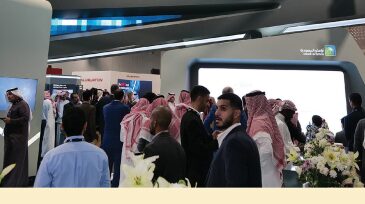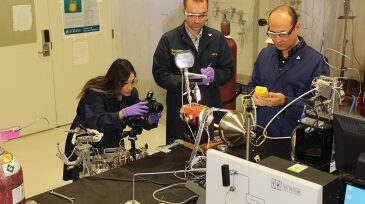Monthly Features
-
This article is the fourth in a Q&A series from the SPE Research and Development Technical Section focusing on emerging energy technologies. In this piece, David Reid, the CTO and CMO for NOV, discusses the evolution and current state of automated drilling systems.
-
Oil and gas experts encourage human/AI partnerships that can “supercharge” capabilities to create competitive advantages.
-
Casing deformation has emerged as a major challenge in China’s unconventional oil and gas fields, prompting the development of new solutions to address the issue.
-
The US supermajor is using one of its lowest-value hydrocarbon products to generate double-digit production increases in its most prolific US asset.
-
Bad vibes are being addressed by contractors as operators push to go faster, deeper, and longer with unconventional wells.
-
As LNG projects sanctioned earlier this decade come onstream, a shortage of new final and pre-final investment decisions threatens to leave the project pipelines dry at a time when global LNG demand is forecast to surge over the next 15 years.
-
Digital advances allow computers to do many of the tedious tasks once done by engineers, which frees them to focus on more interesting tasks.
-
Artificial intelligence can do some things faster and better than humans can. But that may allow engineers to focus on higher-value tasks.
-
The first interdisciplinary oil and gas conference to be held in Saudi Arabia, the 12th International Petroleum Technology Conference, was the largest in its history in attendance. This features highlights of the panel and technical sessions, and an interview with Saudi Aramco CEO Amin Nasser.
-
Hon-Chung Lau, professor of petroleum engineering at the National University of Singapore, offered a short guide to a successful career in petroleum engineering at the 2019 SPE Annual Technical Conference and Exhibition.
-
On the edge of the Arabian Desert, a megaproject located above the Arctic Circle was given the IPTC Excellence in Project Integration Award.
-
JPT interviewed Saudi Aramco President and Chief Executive Officer Amin Nasser during IPTC. He discussed the company’s outlook for the new year and the current state of the oil and gas industry.
-
After 4½ years out of service, the massive Wafra oil field is set to resume production soon, and ensuring a smooth restart is no small order.
-
Produced water is an inevitable byproduct of oil and gas production. The use of online oil-in-water monitors plays an important role in the management of produced water.
-
Oil companies are considering whether shutting in a well for a month or so may mean stronger production later by allowing more time for water to soak into the rock, which gets it out of the way of the oil and gas. But this is not always effective, and additional work is needed.
-
Hess is testing whether it can drive drilling improvement by combining drilling rigs equipped with automated functions and humans determined to find a way to beat the programmed drilling.
Explore Content by Discipline
Power Up With JPT Newsletters
JPT Newsletter (Weekly).
All the top stories, trends, and tech.
JPT Unconventional Insights (Monthly).
Fresh takes on shale and tight oil.
Get JPT articles in your LinkedIn feed and stay current with oil and gas news and technology.
















